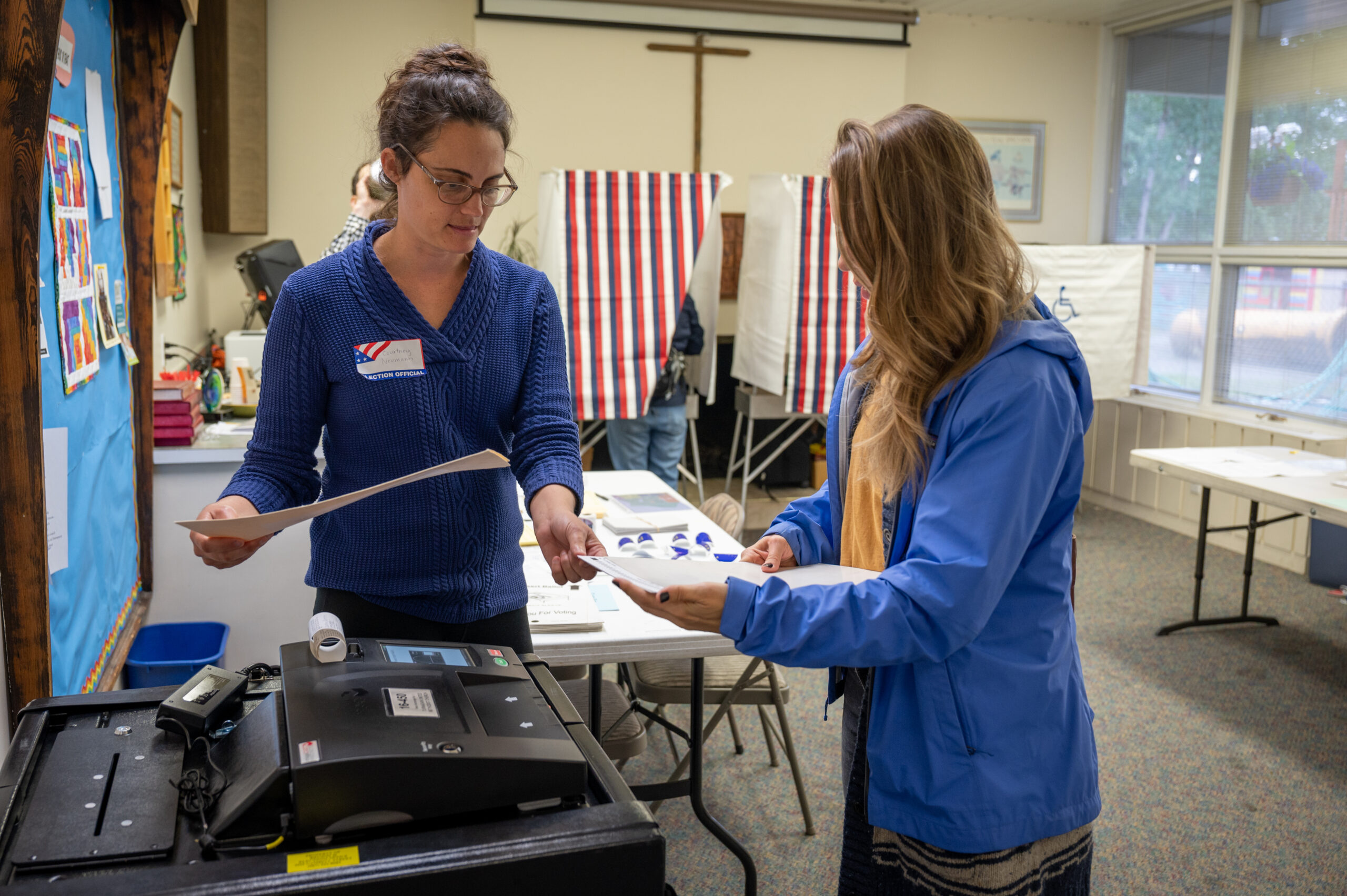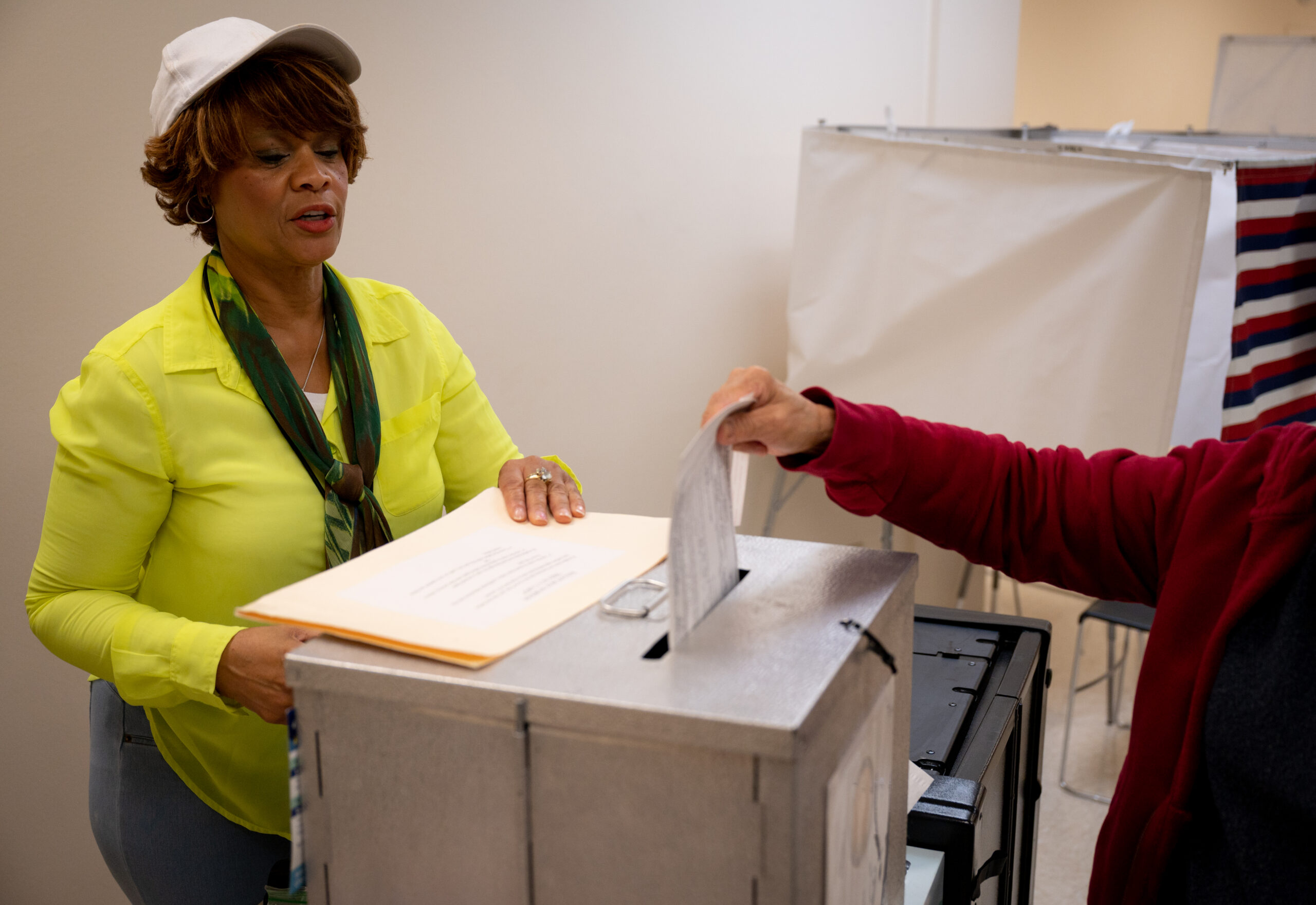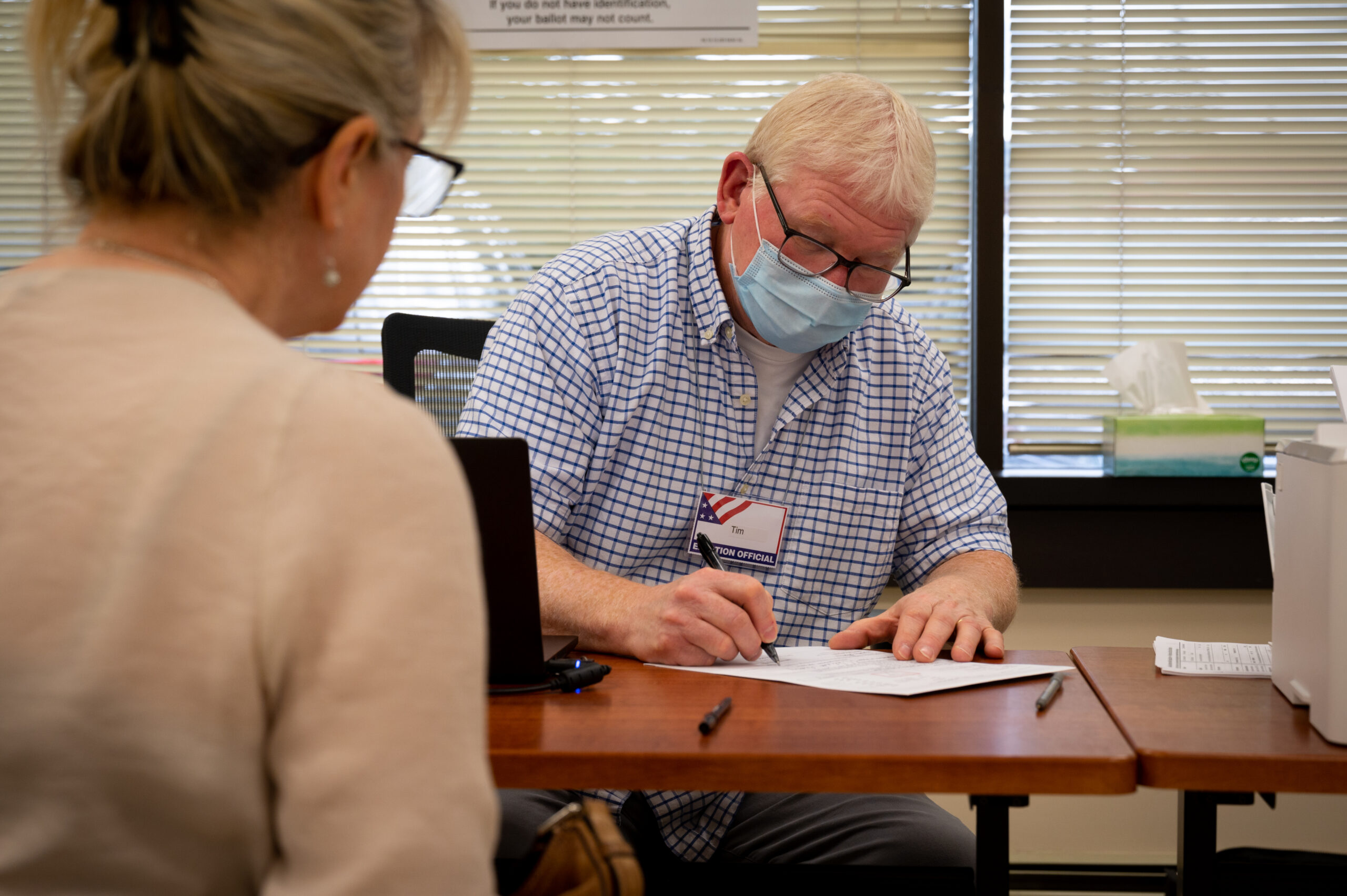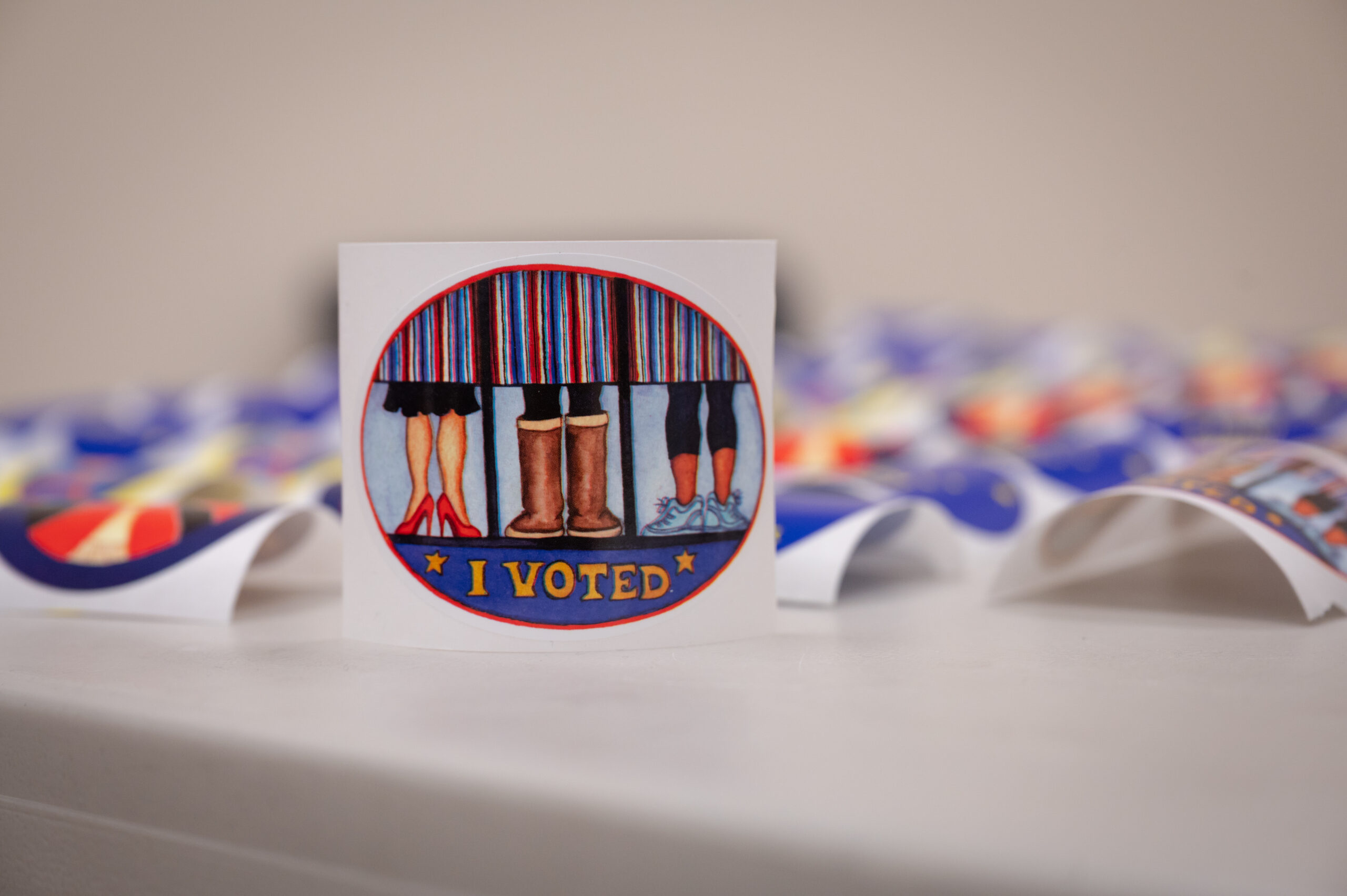
Alaskans headed to the polls Tuesday for their first chance to rank candidates in the special U.S. House general election, as well as to decide who will be ranked in November.
It’s two elections on one piece of paper. On one side, the primary election, where voters pick one candidate for governor, U.S. House, U.S. Senate and state legislative seats. On the flip side, there’s the ranked choice election to decide who will fill the remainder of the late Congressman Don Young’s term.
Thousands of Alaskans have already voted by mail or went to the polls early, ahead of Election Day.
Still, on Tuesday, voter turnout was pretty steady, according to poll worker Debra Caldera at Turnagain United Methodist Church in Anchorage, one of Alaska’s dozens of in-person voting locations.
“We’ve had 101 people who have come through and voted already,” Caldera said around 9 a.m., about two hours after polls opened. Within the next 30 minutes or so, another 30 voters came in.
Caldera said she’s been a poll worker for 10 years and, even with a new voting system, turnout is about the same.
“This is a busy precinct,” Caldera said. “One of the biggest in the city. And I would say that we have about what we had normally here.”

Lt. Gov. Kevin Meyer, who’s charged with overseeing Alaska elections, was out Tuesday morning visiting polling locations. He said Alaska’s first ranked choice election seemed to be going okay.
“Some places it wasn’t a problem and others said there was some confusion,” Meyer said.
In addition to the new system, Meyer said some voters have to contend with new districting and a bunch of new polling locations. But, he said, everything seemed to be running as smooth as past elections he’s overseen.
“Whenever you have over 2,000, basically, volunteers, there’s going to be some start-up issues,” Meyer said. “It seems like once you get up and running, things go fairly smoothly, and they work themselves out.”
In the primary, voters pick one candidate in each race. The top four vote-getters then move on to the November general election. Meyer said since nearly all legislative races have less than four candidates, the stakes in the primary are much lower for them.
“The big one everyone’s, of course, going to be watching is the interim fill of Don Young’s seat, because now all of a sudden, they become the incumbent,” Meyer said.
After Young died in March, a special primary was held to determine which candidates would compete to replace him. In Tuesday’s ranked choice special general election, voters are weighing candidates Sarah Palin, Nick Begich and Mary Peltola, plus six registered write-in candidates.

While supporters of the ranked choice voting say it gives Alaskans more options and flexibility with casting their votes, not everyone is a fan of the new system.
Nancy Tinny described herself as an independent voter. She said she’s worried that ranked choice voting will split the vote on certain candidates.
“So people will go in there and they’ll rank all these people, and what it’s doing is taking away a percentage,” Tinny said, outside of an Anchorage polling place Tuesday. “Why not just vote for one candidate?”
In the end, Tinny said, she only ranked one U.S. House candidate — Palin.

Barbara Hole is another voter who isn’t very supportive of ranked choice voting. She voted at the same place as Tinny, and said she was taken aback by the vast number of names on her ballot. There are 22 candidates running in the U.S. House primary, 19 for U.S. Senate and 10 for governor.
“It’s very confusing,” Hole said. “I like it much better to say, ‘This is who’s going to be the Republican Party, independent party and Democratic Party. I like the old school method much better.”
Unlike Tinny, Hole did rank several candidates on her ballot. She wouldn’t say who she put first.
“I did not vote for Sarah Palin,” Hole said. “Let’s put it that way.”
While voters get used to a new system with just one race to rank, Meyer is hopeful that it’ll be an easy introduction to the new voting method.
“It’s actually a good test run, before we do everybody in ranked choice voting in November,” Meyer said.
Polls will be open Tuesday until 8 p.m.
RELATED:
Today is Alaska’s first ranked choice election. Here’s what to know.
Alaska election guide: Q&As with candidates for U.S. House, U.S. Senate and governor
Wesley Early covers Anchorage life and city politics for Alaska Public Media. Reach him at wearly@alaskapublic.org and follow him on X at @wesley_early. Read more about Wesley here.





